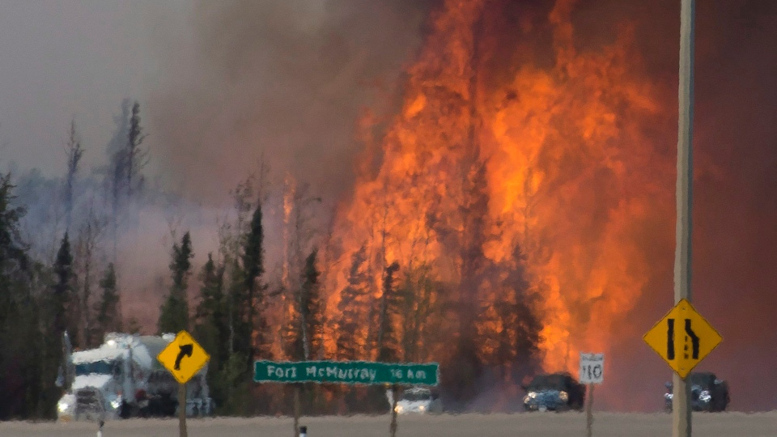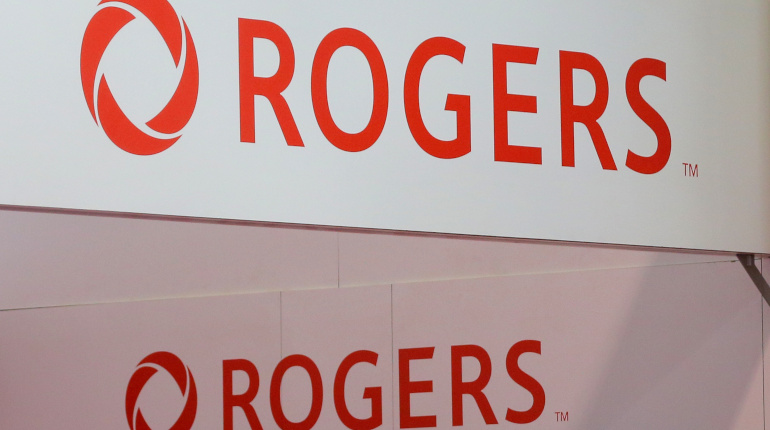On the evening of May 3 the entire population of the city of Fort McMurray was ordered to leave as the ‘beast’ of an out-of-control wildfire swept towards it. 94,000 people fled their homes in a few short hours, from Fort McMurray and other nearby northern Alberta communities. Most people had a terrifying drive through clouds of smoke, with flames in sight and burning fragments falling onto the road. People took only a few belongings and had no idea whether they would return to a home. The worry and stress of escaping this tragedy is immense.
The heroic effort of firefighters saved some 90% of the buildings in Fort McMurray. However, 2,400 buildings were destroyed, others have been damaged and much of the city’s infrastructure is out of commission. The authorities are warning it will be weeks before people can return to their homes.
Amazingly, the city, including hospitals, seniors’ homes and schools, was evacuated in a few hours. The only reported human loss of life was two people who died in a road accident.
The response to fire and evacuation has shown that humans, contrary to the ideology that greed is good, are capable of enormous generosity and solidarity. Twenty firefighters saw the homes they grew up and lived in burned down, continued fighting the fire, working 23 hour shifts in extreme danger.
As people fled south from the fire, people along the way provided gas to fill up the vehicles’ emptying tanks, drinking water and even diapers for babies. People opened their doors to strangers giving them shelter from the fire. Food, clothing, blankets, personal hygiene items and money have all flooded in. Recently arrived refugees from Syria raised funds to purchase supplies.
Inequality in Impact
Many of the workers displaced by the fire had already been displaced from their homes to move to Fort McMurray. These include the thousands of economic refugees forced to move as the jobs had left their communities as well as newly-arrived refugees from Syria.
Like in most disasters, there is inequality in the impacts. If this fire had taken place in a poor country, the fatalities would have been far higher. Fort McMurray and Canada have equipment, technology and infrastructure to successfully evacuate the people on short notice and to stop the fire destroying the majority of the city. Even in Alberta though, workers suffered loss of homes and forced evacuation, while the CEOs, on $10 million a year, and senior management of Fort McMurray’s industry were safe in Calgary.
Fort McMurray’s main industry is extracting the bitumen from the tar sands to produce crude oil. The tragic irony of the fire threatening the centre of Canada’s fossil fuel industry has provoked both silence and debate. Elizabeth May, leader of Canada’s Green Party, was widely condemned for saying that the fire was “very likely a climate event”. Justin Trudeau, Canada’s prime minister joined in the criticism saying her comments were “neither helpful nor entirely accurate”.
If people lost their homes due to a major flood it would be perfectly reasonable to discuss the causes of the flood. But, because of sensitivity about the tar sands, it is an out-of-bounds topic.
Climate Change, Boreal Forests and Fire
Fort McMurray is surrounded by boreal forest, part of the largest land-based ecological zone that rings the northern hemisphere from eastern Canada through Alaska and Russia to Scandinavia. Fire is a natural part of the boreal forest ecology.
Burning fossil fuels, which are the main product of Fort McMurray, causes global warming. The impacts of global warming have been apparent for years in the boreal forests. The average annual temperature across Canada has increased 1.3oC since 1948, while in Alberta the increase is over 2oC since 1950.
The winters are shorter and warmer, resulting in reduced snowpack and with earlier spring the snow melts sooner. In parts of northern BC, next door to Alberta, the snowpack in May was 25% of the historic average. The summers are hotter, increasing evaporation. An increase of 1oC in temperature requires a 15% increase in precipitation to maintain the same level of moisture on the ground. When the fire started the temperature at Fort McMurray was 32oC, compared to the historic average temperature at this time of year of 14oC. Hotter summers mean more lightning, a major cause of fires. In 2015 in Alaska, a slow-moving storm unleashed 50,000 lightning strikes. Warmer winters allow more insects to survive the winter, weakening trees and increasing the amount of dead wood to burn.
These trends add up to increased likelihood of fires which will accelerate as global warming continues. A report in the Proceedings of the National Academy of Sciences (Recent burning of boreal forests exceeds fire regime limits of the past 10,000 years, Kelly et al) found that boreal forests are burning at rates not seen in the last 10,000 years.
Increased Fire Warnings
A group of 70 forest fire experts met in 2009 and agreed that fires were bigger and hotter and this will intensify. In the early days of the Trudeau government Natural Resources Canada staff told the new minister that wildfires were becoming worse and governments were not providing enough resources to assist communities prepare.
The Fort McMurray fire is the largest and most devastating this year. Starting on May 1, covering 2 hectares, by May 13 it had burnt nearly ¼ million hectares (2,500 square kilometres). However, it was not the only fire. By May 13, Alberta had 416 fires.
While it is impossible to say that global warming directly caused the Fort McMurray fire, it is safe to say, as the scientists have warned, that global warming means that fires will get worse.
Climate Change is not Somewhere Else
Until now, most Canadians thought Canada was a relativity safe place with climate change disasters happening somewhere else. Canada will see significant impacts whether it is polar ice melt, more droughts and fires, or greater likelihood of floods. The Fort McMurray fire should be a wake-up call – global warming is real and it is happening here.
Alberta and Fort McMurray were hurting before the fire, due to the sharp drop in the price of oil. It is understandable that the Fort McMurray workers want to have well-paying jobs.
However, every barrel from the tars sands adds to climate change. It does not matter if the oil is burnt in Canada, China or elsewhere. The world has a global weather system. Every atom of carbon added to the atmosphere adds to global warming.
Rather than continue an industry that contributes to more disasters and is vulnerable to market instability, why not change? The case for a serious and determined transition to renewable energy and energy efficiency is overwhelming from environmental, health and safety, and economic standpoints. An energy transition will provide far more good jobs than the tar sands and, with guaranteed re-training, many workers would prefer such work.
The workers of Fort McMurray are not to blame and should not carry the weight of change. Many were displaced to Fort McMurray due to a lack of jobs at home. Many have lost their homes now, and many more will be homeless for months. With the resources of the energy companies in democratic public ownership, Canada could become a clean energy society with good jobs.
The Canadian government, unfortunately, is facing two contradictory ways. At the Paris climate change conference they supported limiting the increase of global temperatures to 1.5oC. Yet they are determined to build a pipeline from the tar sands to the ocean which will add to global warming.
The campaign to stop fossil fuels in order to stop global warming is linked to the fight for good jobs. It is not a choice between jobs or the environment. The real choice is between capitalism with environmental destruction and mass unemployment, or socialism with good jobs and a healthy planet.




